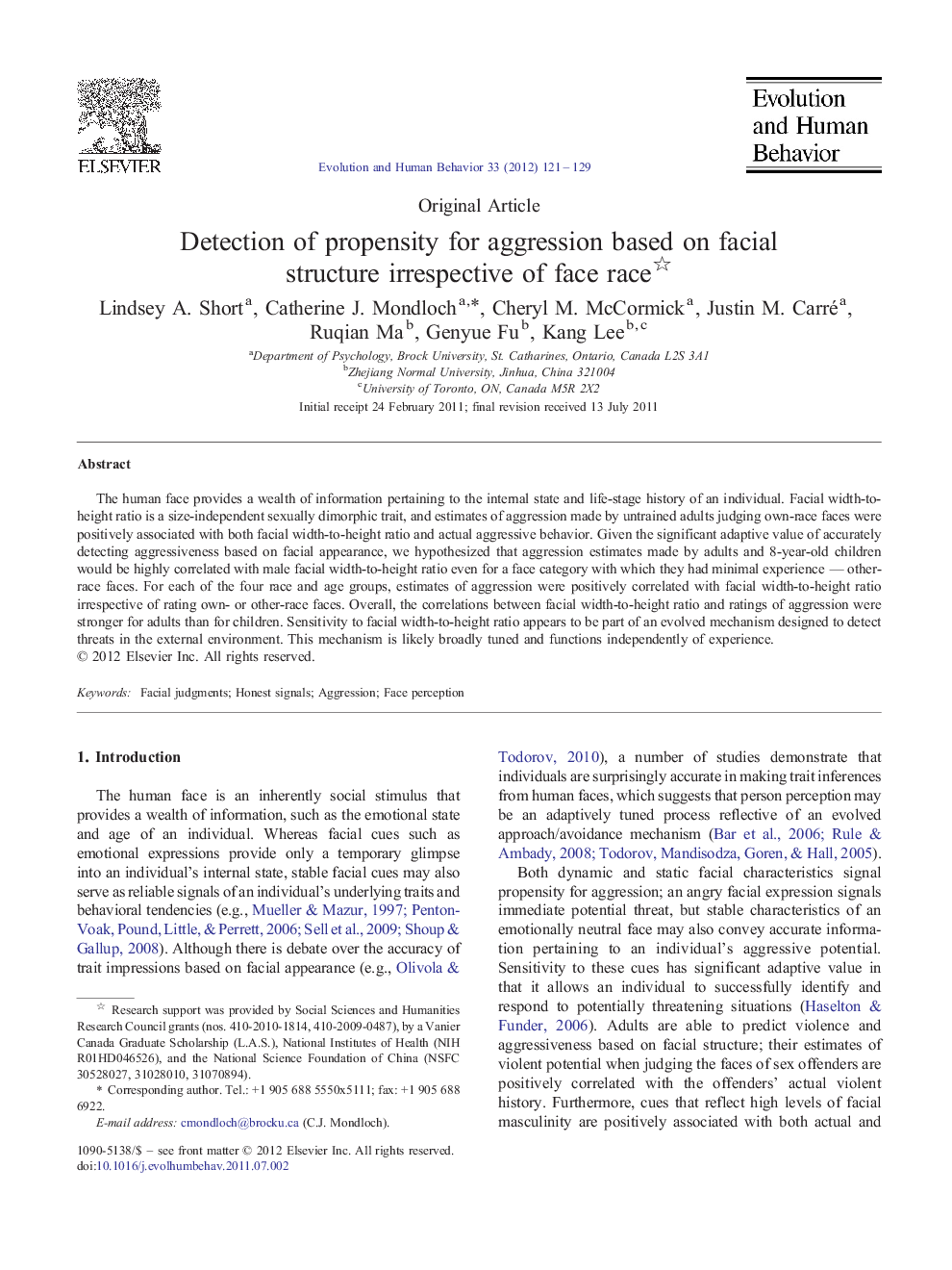| Article ID | Journal | Published Year | Pages | File Type |
|---|---|---|---|---|
| 943275 | Evolution and Human Behavior | 2012 | 9 Pages |
The human face provides a wealth of information pertaining to the internal state and life-stage history of an individual. Facial width-to-height ratio is a size-independent sexually dimorphic trait, and estimates of aggression made by untrained adults judging own-race faces were positively associated with both facial width-to-height ratio and actual aggressive behavior. Given the significant adaptive value of accurately detecting aggressiveness based on facial appearance, we hypothesized that aggression estimates made by adults and 8-year-old children would be highly correlated with male facial width-to-height ratio even for a face category with which they had minimal experience — other-race faces. For each of the four race and age groups, estimates of aggression were positively correlated with facial width-to-height ratio irrespective of rating own- or other-race faces. Overall, the correlations between facial width-to-height ratio and ratings of aggression were stronger for adults than for children. Sensitivity to facial width-to-height ratio appears to be part of an evolved mechanism designed to detect threats in the external environment. This mechanism is likely broadly tuned and functions independently of experience.
